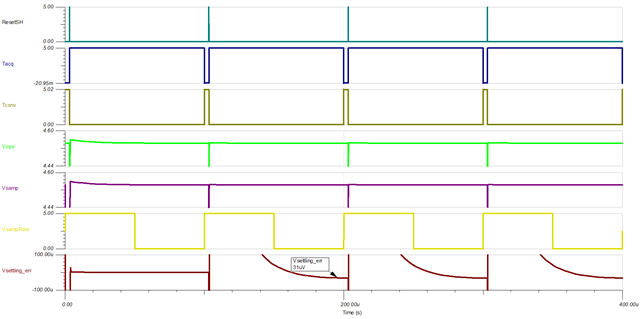Other Parts Discussed in Thread: ADS8168, OPA325
Hi,
I have an amplifier (non-TI) with a GBW of 1MHz om the front emd used to drive the ADC, and am getting a little mixed up about the external RC required to drive the input of the 7066. This particular amplifier will have a non-inverting linear gain of 125 and about 50 ohms output impedance. I calculate an acquisition time of around 100us based on a final sample rate of 10kHz (sample time + conversion time), and come up with a R value of above 4.7kohms minimum, and a C of 620pF nominal. Does this make sense for optimal drive circuit values? Using the analog engineer's design guide, the sample rate used suggests that the min GBW of the amplifier should be under 100kHz, which seems miraculously low. Am I missing something, and are there any other 16 bit, 8 channel converters that don't require a front end RC at a similar size/cost? The application is a portable EEG system, and we are looking for an ADC that will fit up well with minimum external component requirements.
Thanks!


